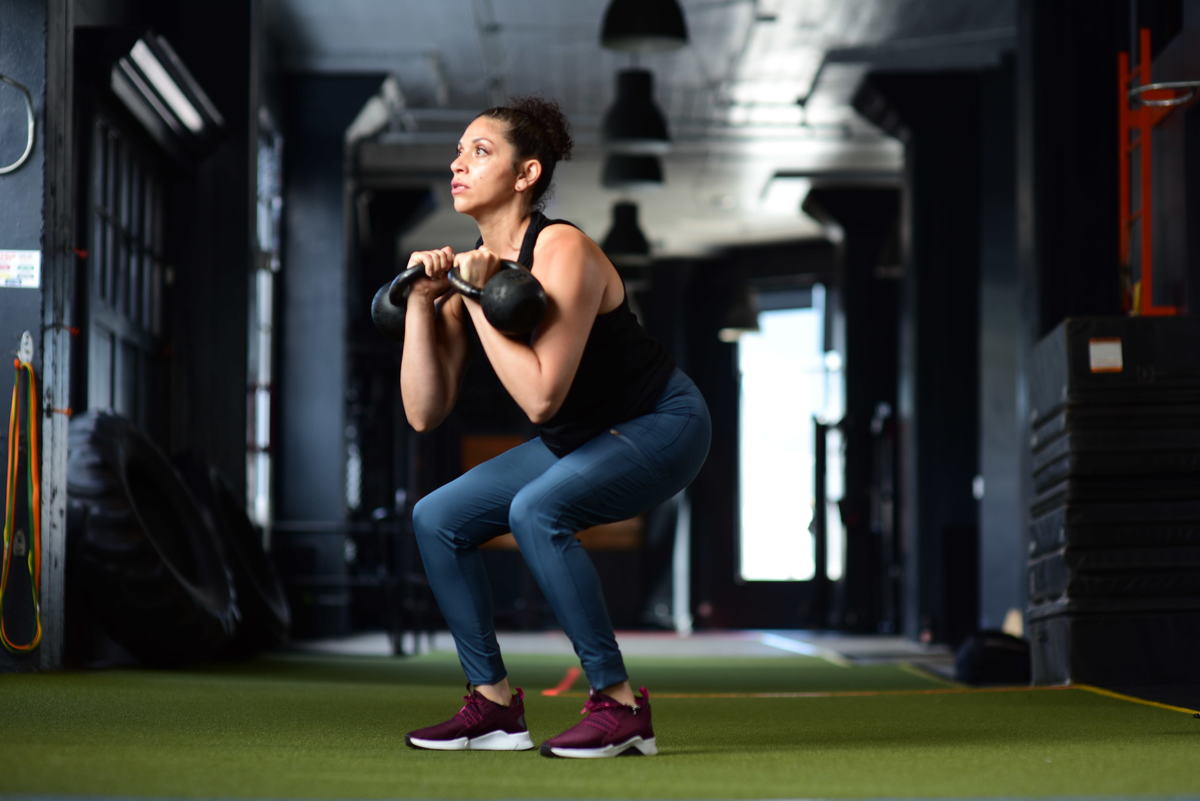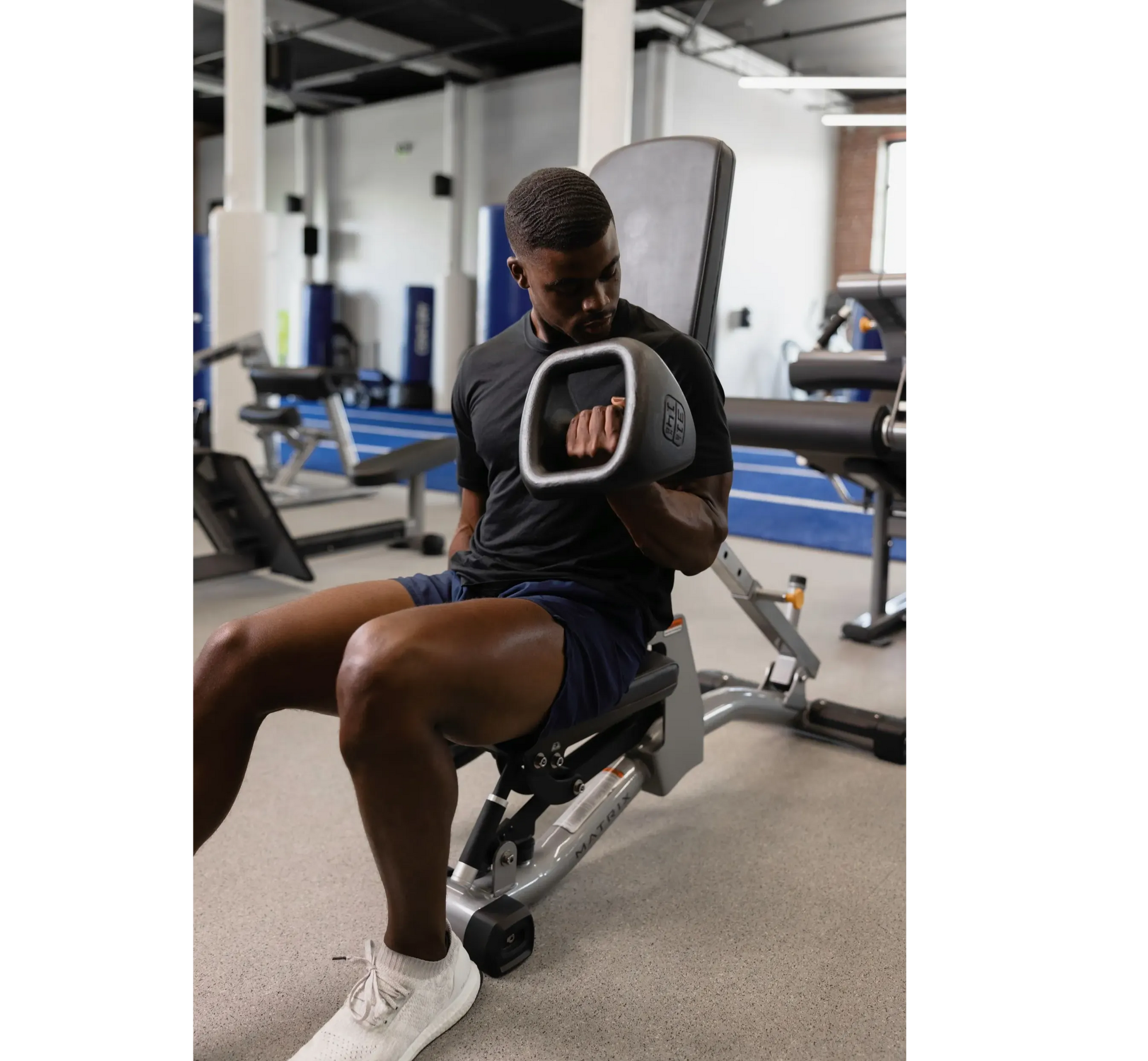If you’re hitting a mental or physical plateau, it’s probably time to introduce some new challenges into your workouts. Kettlebells are an excellent tool to add a little spice to your current routine. Below, we will be giving you some new, complex kettlebell movements to blend into your routine and ideas of how to put them all together in a workout.
Why You Should Try Advanced Kettlebell Movements
Whether you’re using kettlebells or all-in-one equipment like YBells, incorporating complex and compound movements like advanced kettlebell movements is great for your functional training.
Before starting on these more advanced exercises, it’s important to learn the basics. Once you do, you can keep on adding more high-level movements, pushing yourself even further. Kettlebells offer you the opportunity to add progressive complexity to your workouts, and they’re easy to blend into pretty much any routine, making them useful at both professional and home gyms.
5 Unconventional Movements to Try
Here are 5 of my favorite kettlebell movements, which can all be performed with YBells. Try adding them to your routine!
1. Kettlebell Arm Bar
Why Try the Kettlebell Arm Bar?
The kettlebell arm bar is one of the best rehab stability movements to strengthen your shoulders, lats, and chest, making it an excellent movement for warmups. It’s also a great chest and spine opener.
How to Do the Kettlebell Arm Bar
Start with a light weight, and then increase as you perfect your form. This move may be more comfortable with an exercise mat.
- Lay face up on the ground with the kettlebell next to your right shoulder. Roll to your right side to grab the kettlebell with both hands, keeping wrists stacked.
- Roll onto your back and press the kettlebell up with your right arm, keeping your arm vertical for the entire movement.
- Extend your left arm on the ground above your head. Bend your right leg, placing your foot flat on the floor.
- Driving off from your right heel, slowly rotate your hips to roll onto your left side. Keep your knuckles to the ceiling and your eyes on the kettlebell the entire time.
- Retract your right shoulder to your spine while flattening out your hips to the floor to feel the stretch in your chest and spine.
- Hold for 3 to 5 seconds, and come back to the starting position.
- 3 to 5 reps per side.
2. Standing Kettlebell Windmill (AKA: Windmills)
Why Try the Standing Kettlebell Windmill?
This is another great shoulder stability exercise that will challenge the rotation of the spine while hinging at the hip. Kettlebell windmills are a full-body mobility exercise known for improving overall strength in your shoulders, obliques, glutes, and hips.
How to Do the Standing Kettlebell Windmill
Start by trying the movement without weight, then add the kettlebell.
- Start with your feet shoulder-width apart, and toes rotated out about 45 degrees.
- Gripping the kettlebell in your right hand, press your arm overhead with your palm facing forward. You want to lock your elbow and wrist for this entire movement.
- Extend your left arm in front of your left thigh (this creates the look of the two arms of a windmill).
- Look up toward the kettlebell and inhale as you initiate the downward motion by pushing your hips back (similar to a deadlift hip hinge) with soft knees. Your left palm will be sliding down the left thigh.
- Keep your right arm locked the entire time, hinge to your lowest position, and hold as long as you can before any compensation occurs.
- When you have reached your limit, squeeze the glutes, exhale, and slowly reverse the motion back up, keeping a straight spine.
- 3 to 5 reps per side.
Check out the third frame of this IG post for a video of me performing a standing kettlebell windmill.
3. Offset Farmer’s Carry (AKA: Offset Farmer’s Walk)
Why Try the Offset Farmer’s Carry?
Farmer’s carries are easy to progress, making them an excellent move for all bodies. In this case, we will hold the weight in different positions for the carry, creating additional demand and load on the grip, core, back, and the whole body. Offset farmer’s caries are great for core training, spine stability, and overall strength.
How to Do the Offset Farmer’s Carry
Start this move with two equal weights. As you progress, try increasing the weight with the arm in the carry position. This offset places a greater demand on your core.
- Hold one weight in the front rack position with your right hand and the other down by your side with your left hand. Stand with a tall posture.
- Imagine reaching the crown of your head to the ceiling the entire time, keeping the spine tall and stable.
- Ensure your right wrist is locked, your arm tucked in by your side, and your thumb is by your sternum.
- Walk, keeping the spine as stable as possible.
- 30 to 45 seconds per side.
I’m performing the offset farmer’s carry in the fourth frame of this IG post, using pieces from my YBell Kit.
4. Single-arm Kettlebell Rotational Deadlift (AKA: Single-Arm Cross-body Deadlift)
Why Try the Single-arm Kettlebell Rotational Deadlift?
As you become a more advanced athlete, it’s essential to incorporate movements out of the sagittal plane of motion. To avoid injuring your back, you’ll want to train with a load in a slight rotational pattern. The single-arm kettlebell rotational deadlift will still strengthen your glutes, hamstrings, and back.
How to Do the Single-arm Kettlebell Rotational Deadlift
Start with a moderate weight, increasing as you perfect the movement. The second frame of this IG post shows me performing a single-arm kettlebell rotational deadlift.
- Stand with a tall posture and your feet hip-width apart.
- The kettlebell should be slightly in front of and to the side of your left foot (on the ground or on a platform).
- Initiate the motion by inhaling, pushing your butt back, and slowly rotating your right arm to the kettlebell on your left side.
- Only lower as low as you can while maintaining a long spine and shoulder pinched back. (Set the kettlebell on a platform if that helps you to keeo a long spine.)
- At the bottom of the movement, exhale and squeeze with your glutes and hamstrings to pull yourself back up to the original starting position.
- 8 to 10 reps per side.
The second frame of this IG post shows me performing a single-arm kettlebell rotational deadlift.
5. Kettlebell Front Rack Back Lunge
Why Try the Kettlebell Front Rack Back Lunge?
Mixing up the loading of your lunges will help progress and strengthen your legs and increase the use of your core. Kettlebell front rack back lunges are also a great addition to a cardio circuit since they’ll increase your heart rate
How to Do the Kettlebell Front Rack Back Lunge
You can try this move with one kettlebell in the rack position for additional variation.
- Start standing tall. Bring both kettlebells up into the front rack position.
- Ensuring your wrists stay locked and arms tucked by your side, step your right leg back into a lunge.
- The weight will add a demanding load on the core, and your goal will be to keep the spine upright and elongated.
- 8 to 12 reps per side. You can do alternating sides, or all on one side, then switch.
Advanced Kettlebell Workout
Here’s an example of the five moves above blended into a workout. 2 to 3 rounds of each circuit.
2 rounds, 45-second rest between each movement
- Kettlebell halo, 8 to 10 reps per side
- Side plank with rotations, 8 to 12 reps per side
- KB arm bar, 3 to 5 reps per side with a 5-second hold at the most challenging position
- 1-minute rest
Strength Set 1
- DB squat press, find a weight for a tough 8 to 10 reps
- Standing KB windmill, 5 to 8 reps per side, keeping slow movements
- Crossbody KB deadlifts; find a weight for a tough 10 to 12 reps per side
- 1-minute rest
Strength Set 2
- KB front rack back lunges, find a weight for a tough 8 to 10 reps per side
- Alternating DB standing shoulder press, find a weight for a tough 8 to 10 reps per side
- Push-up rows, as many as you can while keeping quality
- 1-minute rest
Strength and Cardio Set
Set a timer for 10 minutes, do as many rounds as you can while maintaining proper form.
- Kettlebell swings, 20 reps
- Offset farmers walk, 45 seconds to 1 minute per side
- Bear crawl, 1 minute
Remember, it’s always important to mix up your workouts, challenge yourself in new ways and have fun. As always, I’d recommend choosing a versatile piece of workout equipment like the YBell to help you progress forward.



